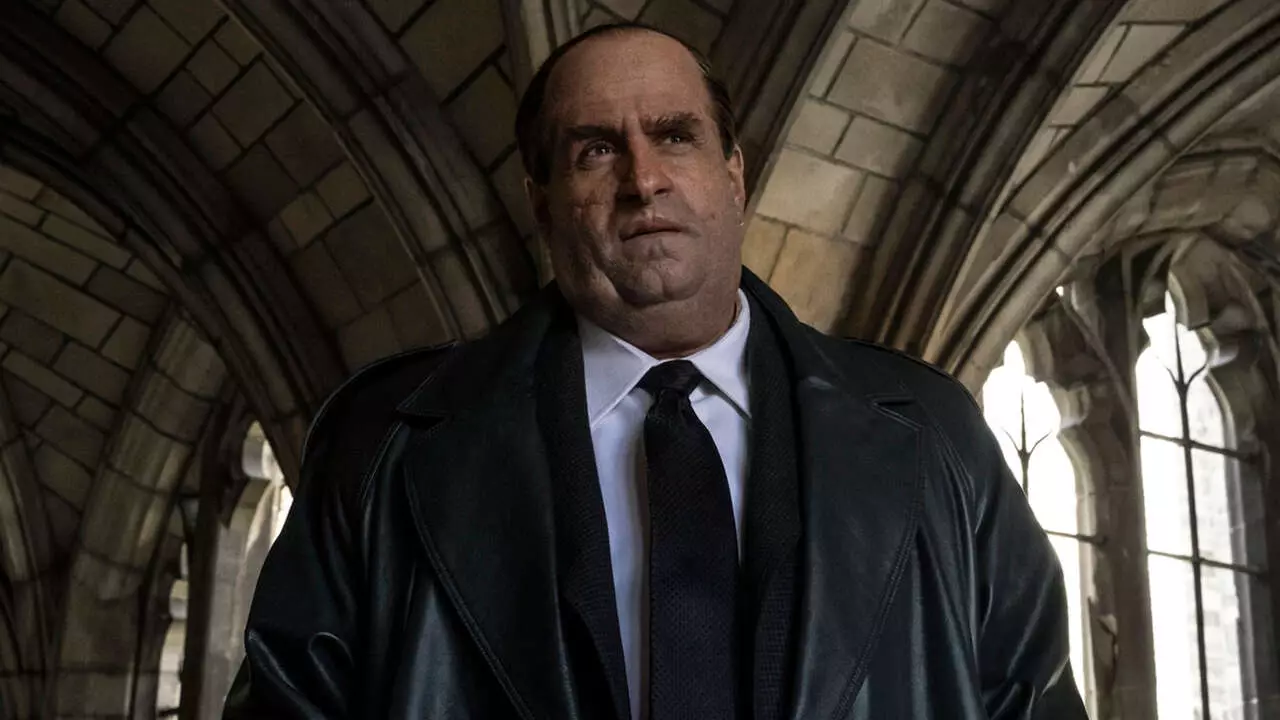In the cutthroat realm of Gotham City depicted in “The Penguin,” a game-changing drug has burst onto the scene. Titled Bliss, this vibrant red crystalline substance is introduced as a potent upgrade to Drops, a drug that captivated the city and its inhabitants, leading to the rise of users known as Drop-heads. With the death of notorious mob boss Carmine Falcone looming large over the city’s underworld, the power vacuum has created a fertile ground for new enterprises like that of Oz “The Penguin” Cobb. This latest episode, airing on October 6, dives deep into the thrilling and often murky world of pharmaceuticals intertwined with crime, revealing not just a new substance, but also a striking link between the fictional and real-world implications of drug creation.
In a significant moment for both the story and characterization, Sofia Falcone takes the audience—and Penguin—on a tour through the warehouse where Bliss is concocted. Viewers are presented with a grow room that visually juxtaposes beauty with danger; the sight is both grotesque and fascinating. Here we find bags of garbage brimming with a mysterious fungus known as Bleeding Tooth. The vibrant yet unsettling image of these mushrooms eliciting a deep crimson liquid immediately invites a sense of intrigue, underscoring Gotham’s mix of the macabre and the alluring.
The introduction of this drug manufacturing site elicits an understanding of the socio-economic issues at play. The chaos following Falcone’s demise, compounded by the Riddler’s alarming act of terrorism, has opened the floodgates for opportunistic characters like Penguin. This scenario mirrors real-life crises in which drug use spikes amid political instability, emphasizing a profound narrative commentary on societal breakdown. Gotham is not merely a playground for supervillains; it is a microcosm of larger societal issues pertaining to crime, desperation, and the allure of drugs as escape.
The artistic choices surrounding Bliss are telling not just in their aesthetic, but also in their conceptual foundation. The Bleeding Tooth fungus, scientifically known as Hydnellum peckii, captures the imagination due to its striking appearance. While in the series it serves as the key ingredient in a potent drug, in reality, it possesses fascinating medical properties. Notably, although the fungus is inedible due to its bitter taste, its crimson excretions serve as a natural anticoagulant. This blurring of lines between fantasy and reality is an intentional choice that echoes the complexities of substance use; drugs often come laden with both promise and peril.
Here, the show takes the opportunity to engage its audience in discussions surrounding drug manufacturing, metaphorically critiquing the pharmaceutical industry. The method of cultivating mushrooms in bags speaks to real-world projects that maximize space for cultivation, imparting layers of nuance to the plot. While it may be tempting to dismiss the drug’s portrayal as mere fiction, it aptly captures the dynamics of how drugs are created and the less savory circumstances under which they proliferate.
As engaging as the episode is, it flags an essential concern: the romanticization of drug culture in popular media can have real-world consequences. Positing Bliss as a desirable substance without fully addressing its repercussions can potentially glamorize drug use for viewers. The captivating imagery and thrilling narrative should be accompanied by an acknowledgment of the dark realities behind substance abuse, which can lead those struggling with addiction down a perilous path.
The show’s creators have sparked rich conversations not just about drugs as plot devices, but also about the ethical responsibility in portraying these narratives. By building a bridge between the fictional allure of Bliss and the real-life implications of drug abuse, “The Penguin” challenges its audience to critically assess their relationship with storytelling and reality.
Ultimately, the latest installment of “The Penguin” effectively weaves together fantasy and real-world elements, using the introduction of the drug Bliss as a springboard for deeper analysis. By presenting the Bleeding Tooth fungus not only as a fantastical creation but as a topic worthy of discourse, the show enriches Gotham’s narrative landscape. In elaborating on the complex interplay between ambition, desperation, and the convoluted world of drugs, it holds a mirror to our societal challenges, examining not just the nature of crime but also the human condition itself. As audiences, we are left to ponder the real costs that lie beneath the surface of our favorite fictional escapades.


Leave a Reply